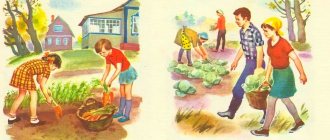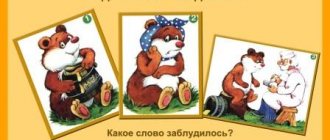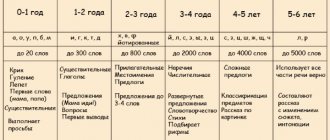APPLE
The amber apples are ripe on the apple tree. Yana and Yasha ate amber apples. (N. Lunina) Everyone knows what an apple looks like. This is not surprising. An apple is among fruits as a potato is among vegetables. Apple orchards on our planet occupy five million hectares. This is the most common fruit tree. The apple has been known to people since ancient times. There is a mention of this fruit in the Bible. It was the apple that Eve plucked from the tree of the knowledge of good and evil. Ancient Greece is considered the birthplace of the home apple tree. The ancient Greeks and Romans considered the apple a symbol of love and dedicated it to the goddess of beauty. The ancient Germans were sure that apples were the favorite fruit of the gods. They planted apple trees around their houses, hoping that the evil storm god would not throw lightning arrows at them. In Russia, apple trees began to be grown already in the 11th century. In 1051, an apple orchard was founded in the Kiev Pechersk Lavra. The first apple orchards appeared in the Moscow region in the 12th century. by order of Yuri Dolgoruky.
On August 19, Rus' celebrated the Apple Savior. Until this time, apples were not supposed to be picked. On this day, ripe fruits were collected from apple trees and blessed in churches. Apples were given to the poor and homeless. The more beggars you treat, the more abundant the harvest will be next year. Housewives baked apple pie on this day. Several hundred varieties of apples are known in Russia. They are divided into summer, autumn and winter. In the second half of September, winter varieties of apples were collected: Antonovka and Semerinka. The skin of these varieties is thick, with a special waxy coating that protects the fruit from rotting. You can store them until spring. Apples are eaten fresh, dried, soaked and frozen. They are used to prepare juices, compote, jam, jam, marmalade, and jelly. Apples are very useful. It is no coincidence that the Russian people created a fairy tale about rejuvenating apples. Eat them and you will be young and healthy. Apples contain vitamins, sugars, iron, potassium and magnesium salts. RIDDLE Same with a fist, Red barrel. If you touch it with your finger, it’s smooth, And if you bite it, it’s sweet. (Apple) PROVERBS AND SAYINGS • September smells like apple, October smells like cabbage. • No apple falls past the apple tree. • Like the tree, so are the apples.
Riddles about fruits, vegetables and berries for children
Website “Mom can do anything!” I collected the most “delicious” riddles about fruits, vegetables and berries for children. Riddles about everyone's favorite apricots and watermelons, pumpkin and cabbage, apples and pears and much more.
***
What kind of fruit has ripened in the garden? Bone inside, freckled cheeks. A swarm of wasps flew to him - Sweet is soft... (apricot)
***
It will stick around the branch like a swarm, And the branch will become golden. The beauty of Siberia and Altai, a pantry of health for everyone. (Sea buckthorn)
***
Warmed by the hot sun, dressed in a skin like armor. Thick-Skinned One Will Surprise Us With Himself... (Pineapple)
***
The blue of the sky will thicken above the earth, A wonderful miracle will suddenly happen in the taiga: Blue scatterings of tender, juicy berries will fall on the bushes like blue dew. (Blueberry)
***
It’s big, like a soccer ball. If it’s ripe, everyone is happy. It tastes so good! What kind of ball is this? (Watermelon)
***
Having warmed its sides in the sun, It hangs on the tree for now, It’s filled with fragrant juice, And you can see right through the seeds. (Apple)
***
It grows like a bunch of bushes, Shines with a green leaf, And all the taiga glades are crimson from this berry. (Cowberry)
***
The golden magic fruit just begs to be put into our mouths. I hid the bones inside. There are four of them, look. If the fruit is not ripe, it will tie your mouth like a rope. (Persimmon)
*** Children know this fruit, monkeys love to eat it. It comes from hot countries and grows in the tropics... (Banana)
***
The berry is red and bitter, But it has great strength, The sun burned the berry, It contains health. (Kalina)
***
The scarlet itself is sugar, the caftan is green and velvet. (Watermelon)
***
It looks like an orange, well, exactly the same. Only bigger and sour, And a little greener. What is the name of this fruit? Did you guess it? (Grapefruit)
***
There is a golden skin on the side, And under the skin there is sweet juice. Each slice contains a sip for both son and daughter. (Orange)
***
The long-legged one boasts - Am I not a beauty, I myself am a bone, Yes, a little red bone. (Cherry)
***
A fruit known to everyone in the world, although sour, it is healthy. You cut it up and make it into tea. What's the name? Answer! (Lemon)
***
Three sisters, born in the spring, Are very similar while they are green, But they differ, since each is ripe, Look: red, black, white. (Currant)
***
It looks like a pear and also like an apple. You can barely guess. Oh, yes, this is... (quince)
***
What kind of fruit is this - a box with a secret! The seeds are delicious to look at, all transparent, all pink, when you shake them, how strange it is, they don’t ring. (Pomegranate)
***
Look into the garden in the fall - Bells are hanging: Bronze, copper, Not harmful to the stomach. (Pears)
***
Round, ruddy, I grow on a branch. Adults and little children love me. (Apple)
***
Sugarloaf Green as grass. If you crack it, it contains scarlet sugar, which both old and young love. (Watermelon)
***
The bead is red, full of sweets, and in the bead there is a cane, on the cane there is a bone. (Cherry)
***
Yellow citrus fruit grows in sunny countries. But it tastes sour, And its name is... (Lemon)
***
This is the sister of cherries, But she is large and kind, Before cherries were in bloom, Sweeter than cherries in the mouth. (Cherries)
***
In satin blue dresses they will roll into the grass under the crown. They will be used for jam and compote, or wash it and put it straight into your mouth. (Plums)
***
Balls hang on the branches, Turned blue from the heat. (Plum)
***
It’s the size of a fist, a red barrel, If you touch it, it’s smooth, if you bite it, it’s sweet. (Apple)
***
It’s big, like a soccer ball. If it’s ripe, everyone is happy. It tastes so good! What kind of ball is this? (Watermelon)
***
Yellow ball, slightly bitter. In summer it will quench your thirst. (Grapefruit)
***
It bloomed white and pink, grew sour and green, poured and turned red, and brought health to everyone. (Apple)
***
You can barely hug this fruit; if it’s weak, you won’t be able to lift it. Cut it into pieces and eat the red pulp. (Watermelon)
***
It grows where the south is hot, serving our health; Dried with a seed is an apricot, and without it it is a dried apricot. (Apricot)
***
There are a lot of berries in the forest, I take black and gray ones. Eat them and your tongue will instantly turn purple. All their usefulness is in the blackness - I will see in the dark. (Blueberry)
***
This fruit is sweet and round and smooth. It's fragrant on the inside and fluffy on the outside.
(Peach)
***
A golden crescent, as if filled with honey. It is fragrant, soft, sweet, and very smooth to the touch. (Banana)
***
It is orange in color, gigantic in size, rich in vitamins, bitter, sour and rejuvenating. (Grapefruit)
***
Blue uniform, white lining, Sweet in the middle. (Plum)
***
There's a round piece of wood hanging, It's a complete bruise, There's a bone inside - And anyone could eat it. (Plum)
***
Like in a princess's box, a handful of ancient red rubies. Sweet juice in ripe rubies. You've probably eaten them more than once. (Pomegranate)
***
There is pink fluff on his cheeks, He is a prince in the summer markets. Its wonderful juice lives, And the bone is in wrinkles. (Peach)
***
Drop-shaped, plum-colored, the vegetable is delicious and beautiful. (Eggplant)
***
One hundred clothes - All without fasteners. (Cabbage)
***
Admire: what a fairy tale! A pointer was hidden in the garden bed. Bright red cheat! And her name is... (carrot)
***
This vegetable is sweet and sour, round, juicy, soft, smooth. He rubbed his cheeks red, and it’s called... (tomato).
***
I was born to glory, my head is white and curly. Who loves cabbage soup - look for Me in them. (Cabbage)
***
It's a vegetable, not a bush. This word has a juicy crunch. If you really love cabbage soup, look for this vegetable in them. (Cabbage)
***
She hides from the sun Under a bush in a deep hole, Brown is not a bear, In a hole - but not a mouse. (Potato)
***
Near the house, between the bushes, In the field, in the garden bed, along the forests, An important crop grows, With a strong, dense texture. We will collect all the tubers, dry them and clean them up, we will eat them until spring, the dishes from them are delicious. (Potato)
***
Casseroles, potato pancakes, Pancakes and mashed potatoes, Zrazy and dumplings, Livers in peel, And excellent okroshka Can be made from... (Potatoes)
***
The grandfather sits, wearing a hundred fur coats, and whoever undresses him sheds tears. (Onion)
***
It is like a traffic light: Red, yellow or green. Everyone has known for a long time Stuffed, salted. You put it in the salad and add it to the seasonings. Don't sit idle, call this vegetable. (Pepper)
***
Garlic is a beloved brother, And it’s no one’s fault that whoever touches him will instantly shed a tear. (Onion)
***
It can be black, it can be white. He pulled the tail from the garden bed and made it with sour cream. (Radish)
***
A beautiful maiden sits in prison, and her braid is on the street. (Carrot)
***
He dragged the Fox out of his mink by his curly tuft. It feels very smooth to the touch, it tastes like sweet sugar. (Carrot)
***
It comes in different colors, children – yellow, grassy and red. Either he is hot, or he is sweet, You need to know his habits. And in the kitchen - the head of spices! Did you guess it? This is... (Pepper)
***
This vegetable is a brother to the cucumber, that’s what people say. Here he lay down on his side. Striped... (zucchini)
***
This is not a toy at all - Fragrant... (Parsley)
***
How riddles grew in our garden bed, juicy and large, so round. They turn green in summer, and turn red in autumn. (Tomatoes)
***
It lies on the bed under the leaf. It is pimply, not smooth. And finally green. And it’s called... (cucumber)
***
There is no more beautiful vegetable in our garden. How juicy, red, round, her nose has grown into the garden bed! It just begs to be added to our bowl. What is her name? (Radish)
***
She hides from the sun Under a bush in a deep hole, Brown is not a bear, In a hole - but not a mouse. (Potato)
***
My cheeks are pink, my nose is white, I sit in the dark all day. And the shirt is green, it’s all in the sun. (Radish)
***
Round, not the moon, white, not paper, with a tail, not a mouse. (Turnip)
***
Round, not a month, Yellow, not butter, Sweet, not sugar, With a tail, not a mouse. (Turnip)
***
Grandfather dragged her from the garden, but one could not get her. They pulled everything in order, One, two, three, four, five. But she sat tight. Who is she? Of course (Turnip)
***
Above the ground there is grass, Under the ground there is a burgundy head. (Beet)
***
It's good for puree; it's hardly used in tea. Until spring it is stored in a cellar or basement. Think a little. Oh, yes, this is... (potato).
***
There is a yellow ball in the garden, But it doesn’t run at a gallop, It’s like the full moon, The seeds in it are delicious. (Pumpkin)
***
All decorated with flowers, take a look at it for yourself. Let's fry these white inflorescences in breadcrumbs for the children. (Cauliflower)
***
Even if she grew up in the garden, she knows the notes G and F. (Beans)
***
What is this miracle in the garden? It looks like a shell under the leaf. It is wavy on all sides. What kind of vegetable? (Squash)
***
Small and bitter, Luke’s brother. (Garlic)
***
The green house is a bit cramped: narrow, long, smooth. Round kids are sitting side by side in the house. In the fall, trouble came - the smooth house cracked, Round kids galloped in all directions. (Peas)
***
White clove for colds Chewing is not bad at all. For colds and diseases There is no healthier vegetable. (Garlic)
***
He dragged the Fox out of his mink by his curly tuft. It feels very smooth to the touch, it tastes like sweet sugar. (Carrot)
***
From a field mouse, He disappeared into the ground with his head, From above there are only tight arrows, Skillfully reaching towards the sun. Cures seven ailments, Ripe is useful to everyone... (Onion)
PEAR
Pear is very tasty. We are very sad without a pear. Pear is delicious, especially in jam. (I. Goryunova) In terms of popularity and space occupied, the pear is in third place after the apple and cherry trees. Pear cultivation began a long time ago. The ancient Roman writer Cato the Elder, in his treatise “On Agriculture,” written more than two thousand years ago, gave recommendations on how to properly grow pears. Pliny the Elder described 35 varieties of pears in his work. Unlike modern varieties, pears in ancient Rome were hard. They became soft at the end of the 18th century thanks to the efforts of French and Belgian breeders. One of them, Van Monet, developed 400 varieties of pears, 40 of which are still popular today.
Now the number of pear varieties has exceeded several thousand. Pears are grown in gardens; they also grow on forest edges and in clearings in deciduous forests. It feels good on rocky mountain slopes, as it is not picky about the soil and tolerates drought and light frosts. Pear trees begin to bear fruit in 5–7 years. True, at first the harvest is small. But when the tree gains strength, they get up to 200 centners per hectare. Pears live quite a long time, up to 300 years. The oldest fruit tree in the world is considered to be a pear tree, planted in 1630 within the American city of Denver. A wonderful pear, very sweet, like honey. It just begs to be placed in your palm, and then quickly into your mouth. (N. Migunova) The pear fruit consists of 97% pulp, 2.5% is the skin and only 0.5% is the seeds. It contains vitamins D and C, potassium, magnesium, and iron salts. Pears are eaten fresh, many delicious dishes are prepared from them, jams, jams, compotes are made, pears are dried and pickled. RIDDLE Birds hang upside down on the trees between the leaves. (Pears)
QUINCE
Transcaucasia and Central Asia are considered the homeland of quince; it is in these areas that it is now found in the wild. Quinces have been grown since time immemorial, more than 4,000 years ago. The Latin name for quince is Cytfonia, presumably derived from the city of Cydon on the island of Crete; it was widely cultivated already in the first millennium BC. The ancient Greeks treated the quince with respect; for them it was a symbol of beauty and fertility. It was customary to treat newlyweds to quince. According to one version, the cause of the discord between Hera, Athena and Aphrodite was not an apple, but a quince. Currently, about 400 varieties of quince are known. They differ from each other in the structure of flowers and the shape of fruits. True, the differences between them are not as significant as, for example, between apple varieties.
Quince fruits are yellow in color with different shades, sometimes with a slight blush, very dense, hard and crunchy. If there are greenish spots on the quince, it means that it is not yet fully ripe. The pulp of this fruit is slightly viscous, tart and quite aromatic - the smell has something of an apple, and there is also a coniferous tint. You should only eat ripe quince; it is advisable to give it a chance to age. The longer it sits, the tastier, more aromatic and softer it becomes, the astringent taste disappears. Quince is a very healthy fruit. It contains potassium, magnesium, calcium, vitamin C, malic and citric acids. Quince pulp is rich in pectin. Quince is a universal fruit. It is eaten raw, it makes delicious compotes, jams, preserves, candied fruits, it can be added to porridge, salad, vegetable soup. Quince mustard is a seasoning made from quince and mustard with the addition of ginger and coriander. Quince cheese is condensed quince juice with pulp. Quince is grown in many countries of the world - in Europe, North America, North Africa, East and Central Asia. Cold-resistant varieties have also been developed and are successfully cultivated in the Volga region. Another variety of quince is Japanese quince, or chaenomeles. The flowers and fruits of this plant are similar to quince. Chaenomeles was brought to Europe from Japan at the end of the 17th century. Gradually it gained popularity among gardeners - it has very beautiful decorative flowers. Japanese quince fruits are also edible, but they are more sour.
Pages: 1 2 3 4
Fruits: materials for games, conversations and activities with children.
In this article you will find:
- Conversation about fruits.
- 10 speech games on the topic “Fruits”.
- Finger gymnastics.
Additional material for the article - riddles about fruits can be found in the article "Riddles"
Kindergarten 100 years ago. “Conversations with young children” L. K. Shleger.
Conversation about fruits by L. K. Schleger. 1913.
Preparing for the conversation.
There are different fruits in front of the children. They name them, determine their shape, colors. Determined by touch and taste with eyes closed.
Catalogs of fruits should be at hand; drawings in paints (that is, color pictures); artificial fruit
Conversation.
What do fruits grow on? What is the name of the tree on which apples grow? Can plums grow on an apple tree?
What does a ripe apple look like? What does it taste like? (Sweet, juicy). Who colored the apple so much? What protects the apple pulp? (Peel). When is the apple ripe? The beauty of an apple tree hung with ruddy apples.
Has anyone ever seen an apple tree with apples? What are the apples sitting on?
Who can tell me how an apple grows? Is it always so big and ruddy? What color is an unripe apple?
What does it taste like? Before the apple appears, the apple tree blooms. When does it bloom? In the spring. Has anyone seen an apple tree in bloom?
We'll look at it in the spring, but for now let's look at the picture.
Let's see what's inside the apple , cut it - one lengthwise, the other across. What are the seeds in and how many are there? Why do apple trees need seeds?
Why do you need pulp? She guards the seeds. What color are ripe seeds? What about the unripe ones?
What kind of seeds do cherries have? At the plum?
Who eats ripe fruits? Do some people eat and love them? Do people eat seeds? They spit them out.
What do birds eat? Seeds fall on the ground, and what grows from them?
What do you sometimes find in apples, pears, plums? Worm. How did the worm get into the apple tree? Does the worm remain in the apple?
He gnaws it and comes out (find an apple with a worm in it). A worm is made into a pupa, and a pupa is made into a butterfly.
What do we make from fruits? What do we make jam from? Has anyone ever seen dried fruit? Show and try. What else is made from fruits?
Kvass, liqueur.
Do we grow grapes? What do they make from it? What other fruits do you know that grow in warm countries?
Oranges, tangerines, lemons. Are the skins of oranges and lemons as thin as those of an apple?
What fruits does an oak tree or a Christmas tree have? Who collects and eats them? Is this fruit?
Children's work on the topic "Fruits".
- Modeling fruits, drawing them.
- Cutting out pictures of fruits from catalogs and magazines.
- Illustration “Apple picking”.
- Fruit stand (making a model for children's games together with the children)
Question for educators to consider:
Exactly 100 years have passed since the publication of this conversation for young children by the talented teacher Louise Karlovna Schleger! Have we and our children changed? How does L. K. Schleger’s conversation about fruits differ from modern conversations about fruits in kindergarten?
What requirements for a conversation with children were taken into account when compiling this conversation? What would you change about it?
You will learn more about conversations with children and about our history of methods for developing children’s speech from the article “Conversation in kindergarten” based on materials from the book by E. A. Flerina “The Living Word in a Preschool Institution.”
Practical materials for classes, conversations and games with children on the topic “Fruits”
Speech games with preschool children on the topic “Fruits”
Game 1. Ladder in the garden. Choose a word.
Together with your child, come up with as many words as you can about what kinds of fruits there are. For example, today we will play with the word “apple” - “What kind of apple can there be?”, and next time with the word “pear” - “What kind of pear can there be?”
You can choose words on the road, on a walk, on the bus or in the car. But the best thing is to play!
How to generate interest in a word matching game?
Speech exercises are difficult for children, so it is best to carry them out in a playful way and so that the child can clearly see the result of his efforts. I came up with my own technique for this - “visual game assessment of the result of speech.” This is how I do it.
I usually draw a large tree on an easel with a felt-tip pen (you can draw a tree on a piece of paper or on a board). On the tree I draw fruits, but they must be drawn very high from the ground. There is a ladder next to the tree.
The staircase is drawn as two vertical parallel lines. But - this is important - there are no steps drawn on it!
How we play: we select words and climb up the stairs to get fruit. One word = one step.
As soon as we have chosen one word, I draw one step. We found another word - I draw another step. How many words were chosen - so many steps appeared on the ladder!
With each word, more steps are added, and we climb higher and higher (you can rearrange the children’s figures according to the image of the ladder). The task is to get to the top of the tree, and for this you need to choose a lot of words!
There should definitely be a pleasant surprise waiting for children at the top of the tree! When children take an apple (or plum) from the crown of a tree, on the back of the picture they should find something - a plan indicating the place where a surprise is hidden, a riddle, a small gift, a beautiful piece of paper, words of congratulations from the Gardener, a drawn medal, magic words etc.
Hint for adults
Words for the game: fragrant, big, tasty, tasteless, sour, sweet, rosy, tender, fragrant, juicy, bulk, red, yellow, golden, striped, ripe immature, ripe, round, oval, elongated, soft, hard, rotten , wormy, dried, large, small, boiled, summer, early, early ripening, southern.
Helpful advice:
- It is better if you say in this game words that are rarely found in everyday communication (“fragrant apple”, “fragrant apple”, “ripe apple”), and the children will select simpler words (“sweet apple”, “round apple”) ", "ruddy apple"). If children find it difficult, then you can suggest words to the kids with a gesture, suggest the first syllable, remind them of a familiar line from a poem in which this word appears
- This game is difficult for children at first. But later, interest and attention to words and expressive speech develops. Children begin to be very attentive to the words and literary texts that are read to them, listen to the speech of adults and notice vivid figurative epithets in it. Therefore, the game is very useful for developing attention to language, for enriching and activating children’s vocabulary, and for preparing for school.
- I really love reading Y. Akim’s poem to children, which contains many expressive epithets. Listen to it as a child and find beautiful, special, expressive words in it.
“The apple is ripe, red, sweet, the apple is crisp, with a smooth skin. I’ll split the apple in half, I’ll share the apple with my friend.” (Ya. Akim).
Here are more poems about apples, in which there are many beautiful figurative words for speech play.
Fragrant, rosy,
More details rodnaya-tropinka.ru








